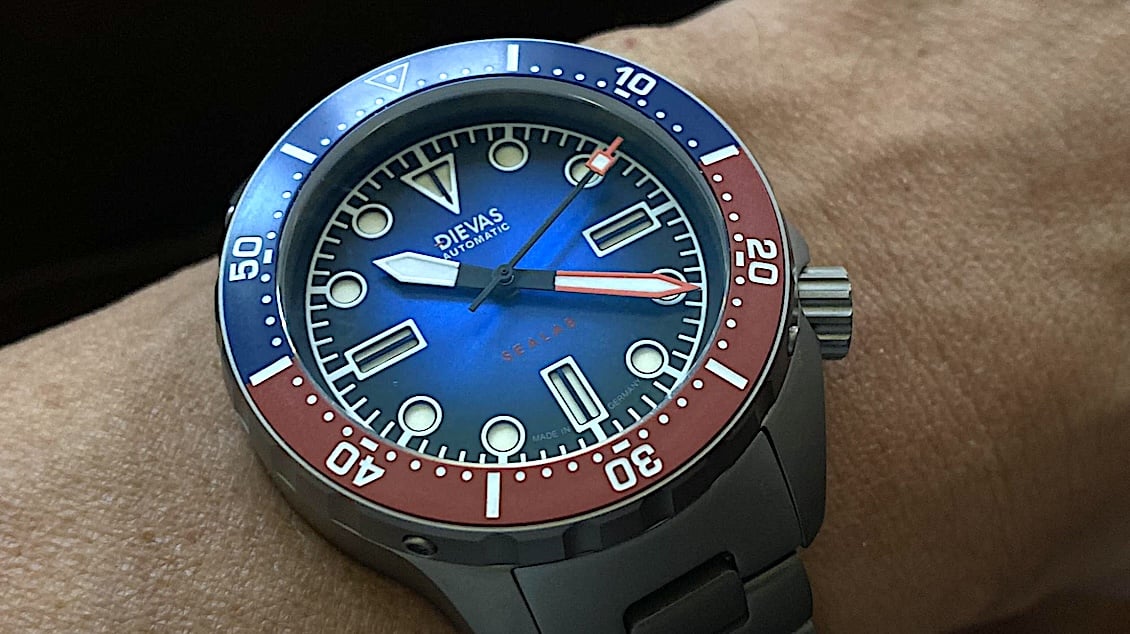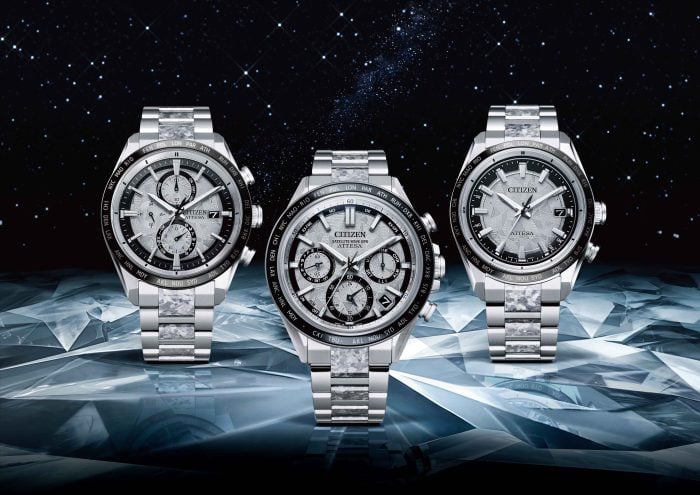In the world of German watches, there aren’t that many players, unlike the Swiss. High-brow brands such as A. Lange & Söhne, Glashütte Original, Montblanc, and Moritz Grossman occupy the higher price tiers, but when you start lowering the price point below a few grand, the remaining standout brands such as Sinn, Hanhart, Tutima, Nomos, Laco, and Damasko dominate the space. None of these brands comes close to the volume of watches produced by their Swiss counterparts, but they are all impeccably crafted and beloved in watch circles.
Enter German microbrand Dievas. Introduced in 2006 by Gnomon Watches, a watch dealer out of Singapore, Dievas is still very much niche even for the German watch cognoscenti. The good news is that every Dievas watch is built in Deutschland and made to take a beating.
Until recently, the German members of my watch collection included the Hanhart 417 ES pilot’s chronograph, the Damasko DA36, and the Sinn U50 Professional. Like Tutima, Damasko, and Sinn, Dievas’s primary focus is on tool watches, which are purpose-built and made to be worn hard. I had heard a lot about Dievas in watch forums, and I finally took the plunge when the Maya MK III Sealab Blue showed up in an email from Gnomon. For $1,240 minus a whopping 20 percent off for special Gnomon Lounge members, I ordered the Maya MK III Sealab Blue, one of six different colorways of the third-generation Maya.
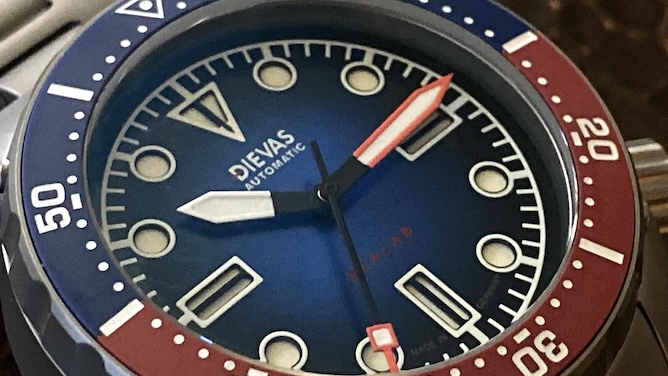
Photo: Amos Kwon
The Maya is the brand’s premium dive watch, and the MKIII improves on the MKII’s significant case width (44mm in diameter) by reducing it to a rather accommodating 41mm. Other changes include a luminous sandwich dial with sunburst effect, a ceramic bezel insert, a hardened case and bracelet, and the use of a Swiss Selitta SW200-1 in place of the ETA 2824-2 automatic movement.
When the watch arrived, I was impressed with the design and the construction. It’s not a light watch, by any means, and it feels remarkably solid in its construction. The Maya MKIII might seem thick at 13.8mm (up 0.3mm from the Maya MKII), but given the 1,000-meter water resistance, the dimensions are quite impressive. The helium escape valve at 2 o’clock also points to the Maya MKIII’s purpose, aside from telling the time.
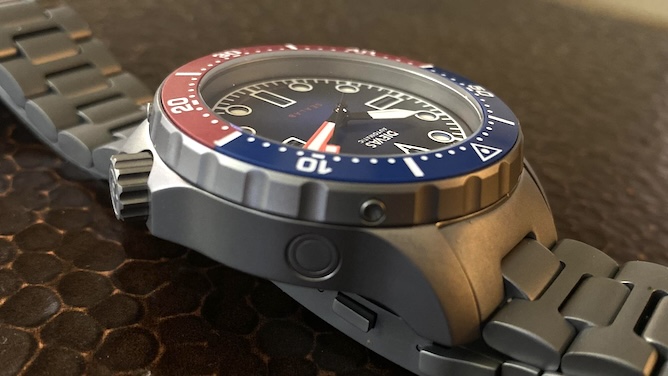
Photo: Amos Kwon
The 316L stainless steel has been both bead-blasted and DLC-coated elevating the hardness level from the standard 230HV (Vickers scale) to a substantial 1200HV. This equates to a tougher watch that will resist dings and scratches better than most. At the same time the treatment gives the Maya MKIII a handsome, albeit less dressy, matte grey hue. It mimics the same gray as some of Sinn and Damasko’s similarly hardened timepieces.
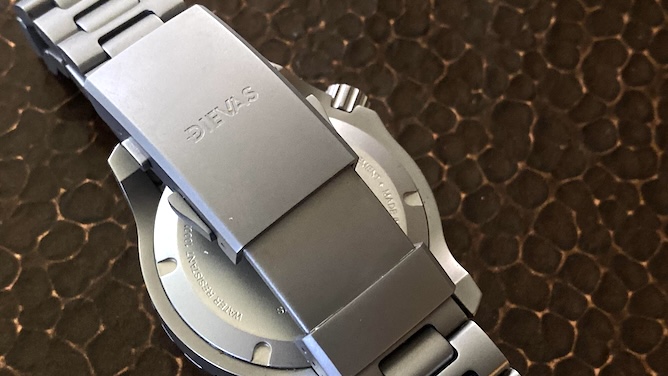
Photo: Amos Kwon
That same coating is present on the H-link bracelet and diver’s extension clasp. The adjustable links don’t use friction pins but instead have single-sided screws, a preferred choice for higher-quality watches. The ratcheting diver’s extension clasp isn’t just for wearing over a wetsuit. The micro-adjustable feature is also perfect for swelling wrists in warmer weather or due to overconsumption. It’s not a small clasp, but it’s quite comfy and also serves as another visual reminder that the watch was made, first and foremost, for diving.
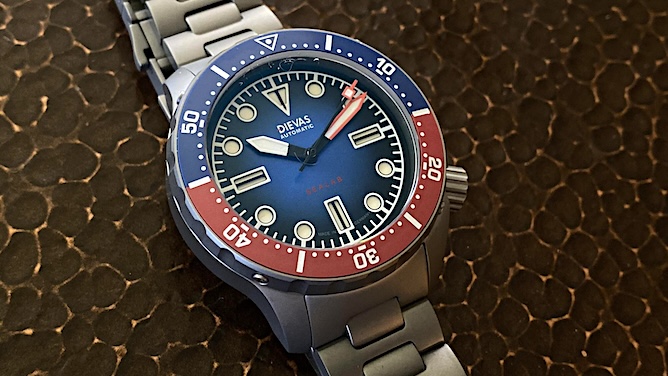
Photo: Amos Kwon
The slightly muted ceramic Pepsi bezel adds more visual character than a straight blue bezel, and it’s also very scratch-resistant. The blue half isn’t an exact match for the sunray dial, but it’s close. Speaking of which, the sandwich dial is a stunner. It adds layered depth to the watch, and the crossbars at 3, 6, 9, and 12 o’clock give the Maya MKIII a unique look I haven’t seen on any other watch. The square-tipped second-hand is an interesting choice against the mostly circular hour markers.
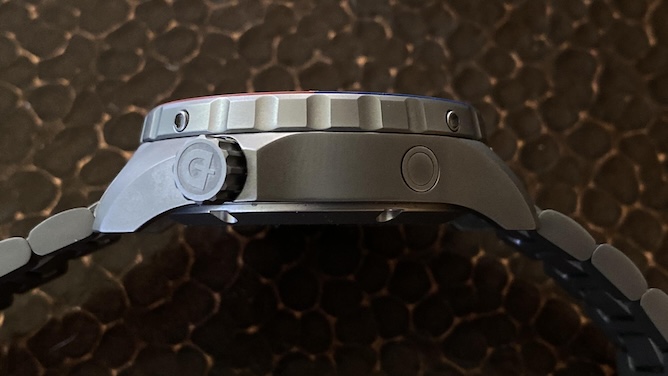
Photo: Amos Kwon
One cool feature of the bezel is its swap-ability using four Allen screws. Gnomon sells a few different colors, so you can customize your watch if you so choose. On the downside, I wish the teeth on the bezel were as grippy as the logo-emblazoned crown that’s set nicely in an extended protective section of the case. The Gnomon site shows a rendering of the Maya MKIII with more aggressive teeth, which means that didn’t make it to production. The bezel on the production version looks better, but it could be tough to operate with diving or other gloves.
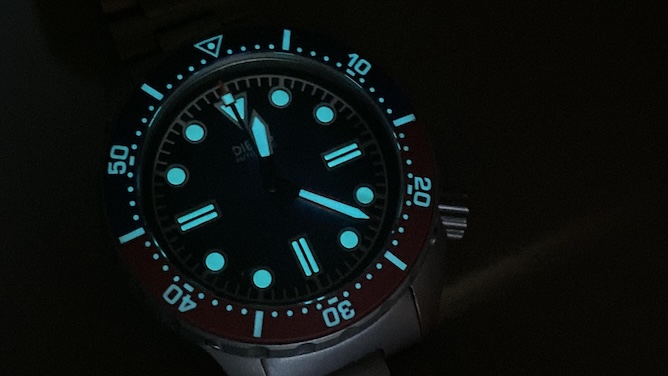
Photo: Amos Kwon
So, how is the Maya MKIII in low light conditions? The blue-green BGW9 SuperLuminova isn’t mind-blowingly bright, but it’s very visible in low light and lasts the entire night. The dial and bezel are both treated with it, so it’s a nice match. You’ll need that lume if you ever drop to the 1,000-meter water resistance, which is extremely unlikely. My Sinn U50 Professional is good to 500 meters and costs more than twice the price of the Dievas Maya MKIII.
In terms of wearability, the shape of the caseback provides a substantial amount of wrist contact, which means it’s very comfortable. The curvature of the lugs, the 4 o’clock crown position, and the shape of the case equate to a visually smaller watch and increased comfort. It says a lot about what seems to be a very intentional design. The thickness, however, is a substantial 13.8mm, so it’s even taller than the MKII, which was 13.5mm. Don’t try slipping this beast under a dress shirt cuff.

